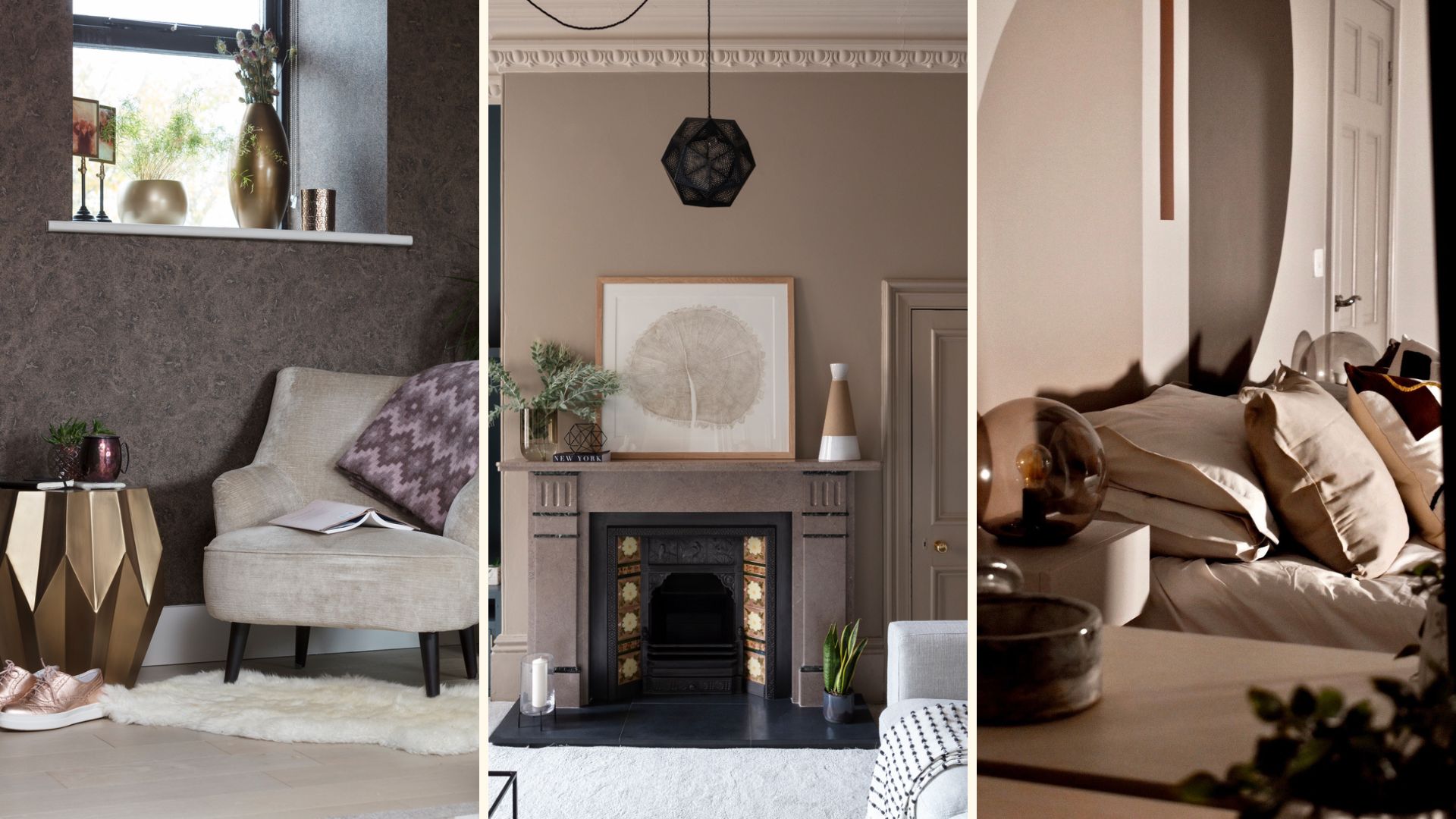
Are you contemplating the idea of decorating with brown but unsure where to start? Look no further, this deliciously rich colour is one of my favourite decorating shades, so I have all the personal secrets to share and top tips for successfully using this beautiful hue in your home.
This warm and versatile colour is everywhere right now. From being one of the hottest interior paint colour trends and interior colour schemes, the trending seasonal shade is also brown, taking centerstage as the must-have colour staple in our wardrobes and in-demand brown nail designs. It's safe to say 2025 is the year of all things brown.
The secret to success when decorating with brown is to consider all the senses. Also, I advise fully committing to the scheme and incorporating furniture, soft furnishings and accessories that spark joy – a concept we looked at in detail with the 'dopamine decor' trend.
Decorating with brown: 7 styling tips from interior designers
Generally speaking, brown is a warm, cosy and calming colour. You don’t have to look far into nature to be treated to an array of beautiful shades of brown. Earthy, natural and grounding, it's therefore why these shades can help you reflect and relax.
The other side of this coin is that brown can often feel dreary or uninspiring if not paired with the right textures and colours to make it feel uplifting.
When decorating with brown, what works for someone, might have another running for the hills, but the good news is that there are techniques you can apply to decorating any room with brown.
These tips and tricks can be tweaked to suit your interior style, let’s take a look...
1. Drench the walls in deep colour
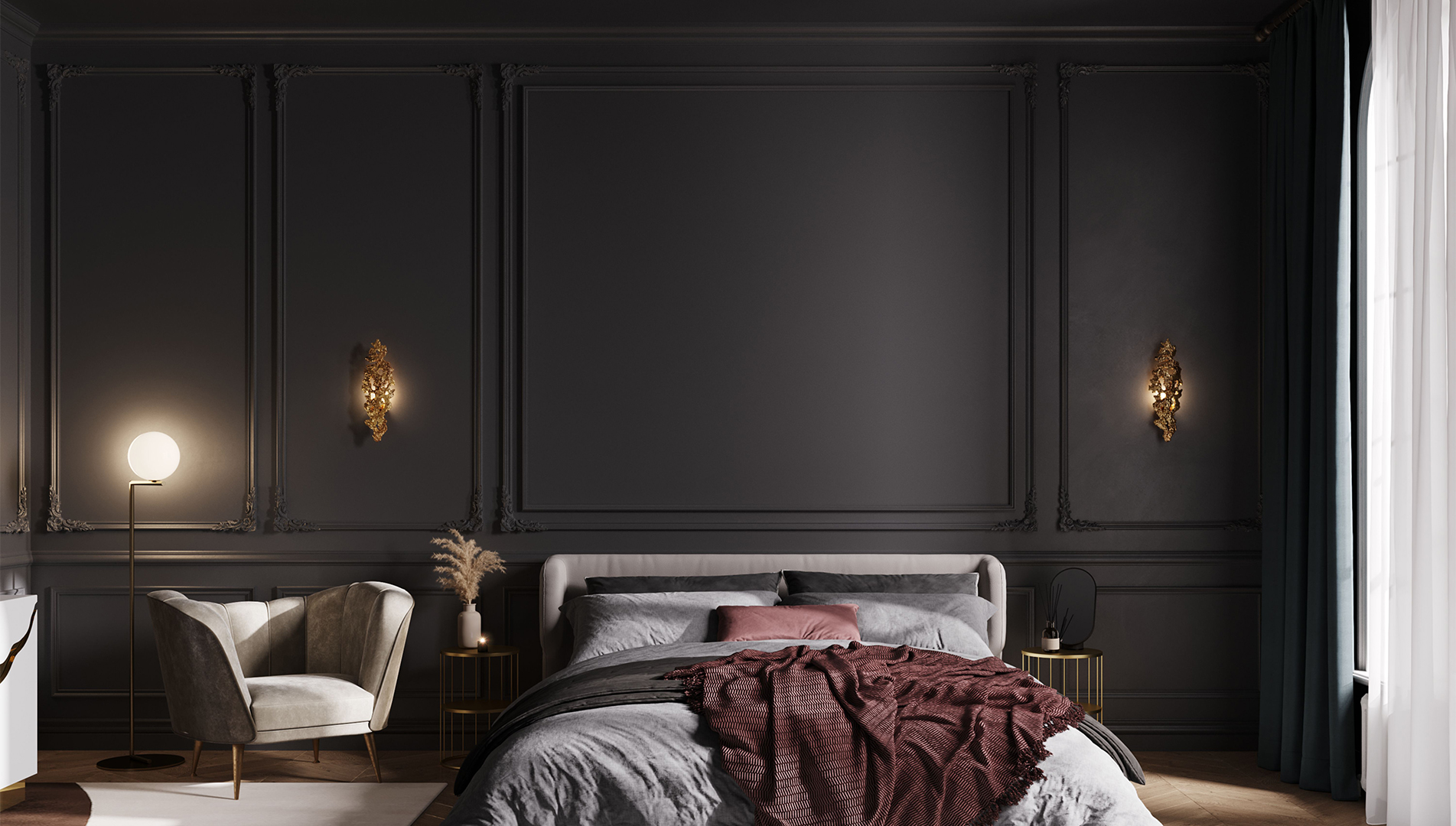
There’s no denying that colour drenching (the name for the painting technique that covers a room from top to bottom in one colour, even the fixtures and fittings) is having a moment and dark luxurious browns lend themselves so well to this technique.
As you can see from the above image from Caffe Latte, colour drenching is a great way to make a room like a bedroom feel cosy.
“Rich, warm colours based on Umber and Ochre deliver cocooning, restful and charming spaces," says Ruth Mottershead, creative director at The Little Greene Paint Company.
"Deeper, richer caramels are perfect for creating enticing and sumptuous spaces, whilst soft golds provide comfort and reflect the desire to create warmth within our homes."
2. Embrace tonal wallpaper
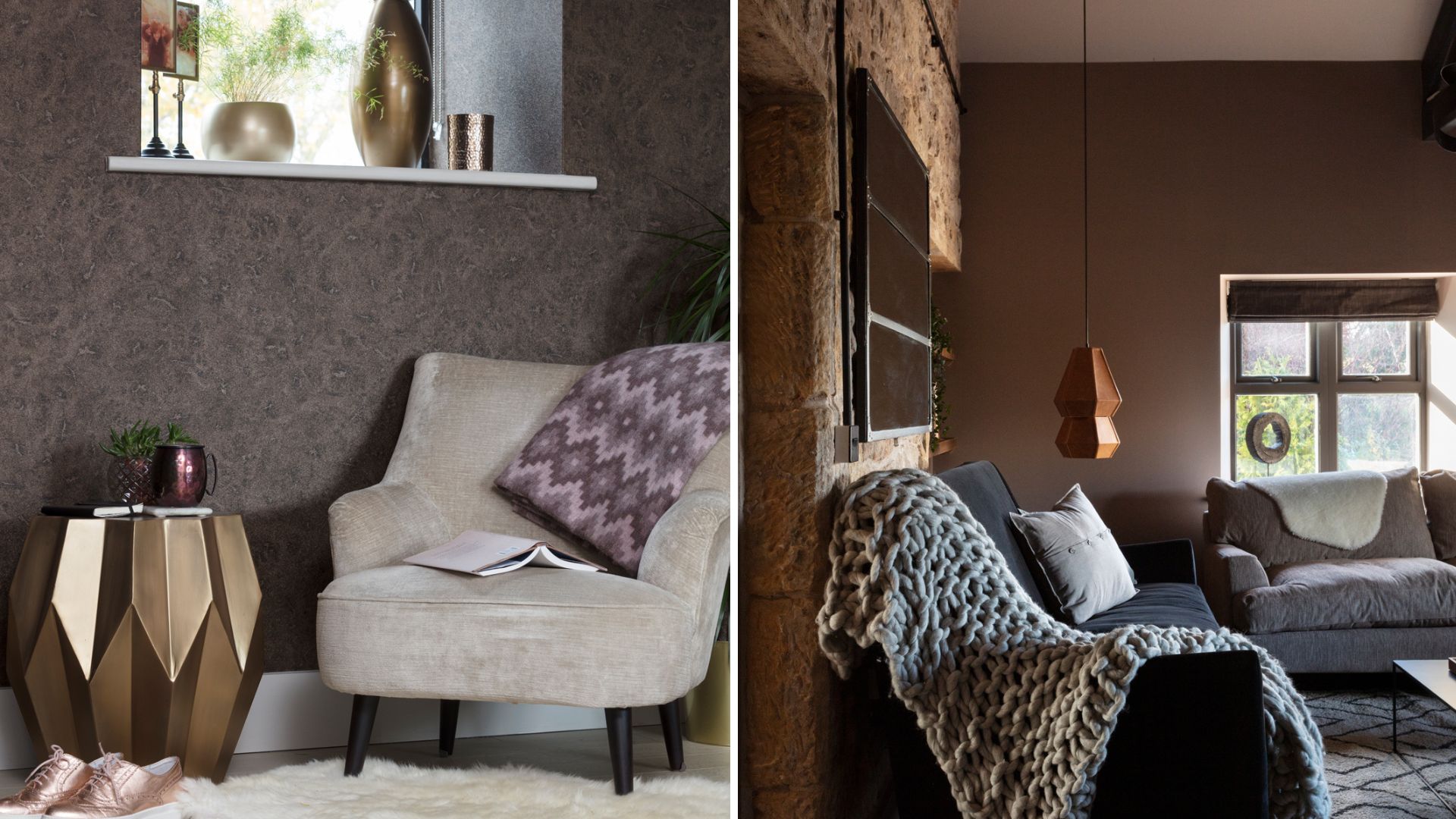
Embrace one of the hottest wallpaper trends to incorporate an element of decorating with brown without using a colour blocking 'flat' finish. “A great way to select a palette is to bring in a wallpaper with multiple tones in it," says Cathy Dean, founder and CEO of Studio Dean.
"When thinking about a decorating scheme, you need to give it depth, never more true with brown, which is not at its strongest on its own, it needs variation as you see in nature too. A tree’s bark is not just one brown, it has many shades and textures."
"So when decorating with brown, use lots of shades and textures to look natural. Pick a palette of tones of brown, you’ll need four or five shades going from light to dark. Pulling out the light and dark elements of the paper and bringing a paper into your scheme works wonderfully to add in much needed texture."
"We’ve been busy over at The Studio Dean Edit and given our love for this colour family, we have created some beautiful wallpapers all in our favourite brown base."
3. Play it safe with a balanced brown palette
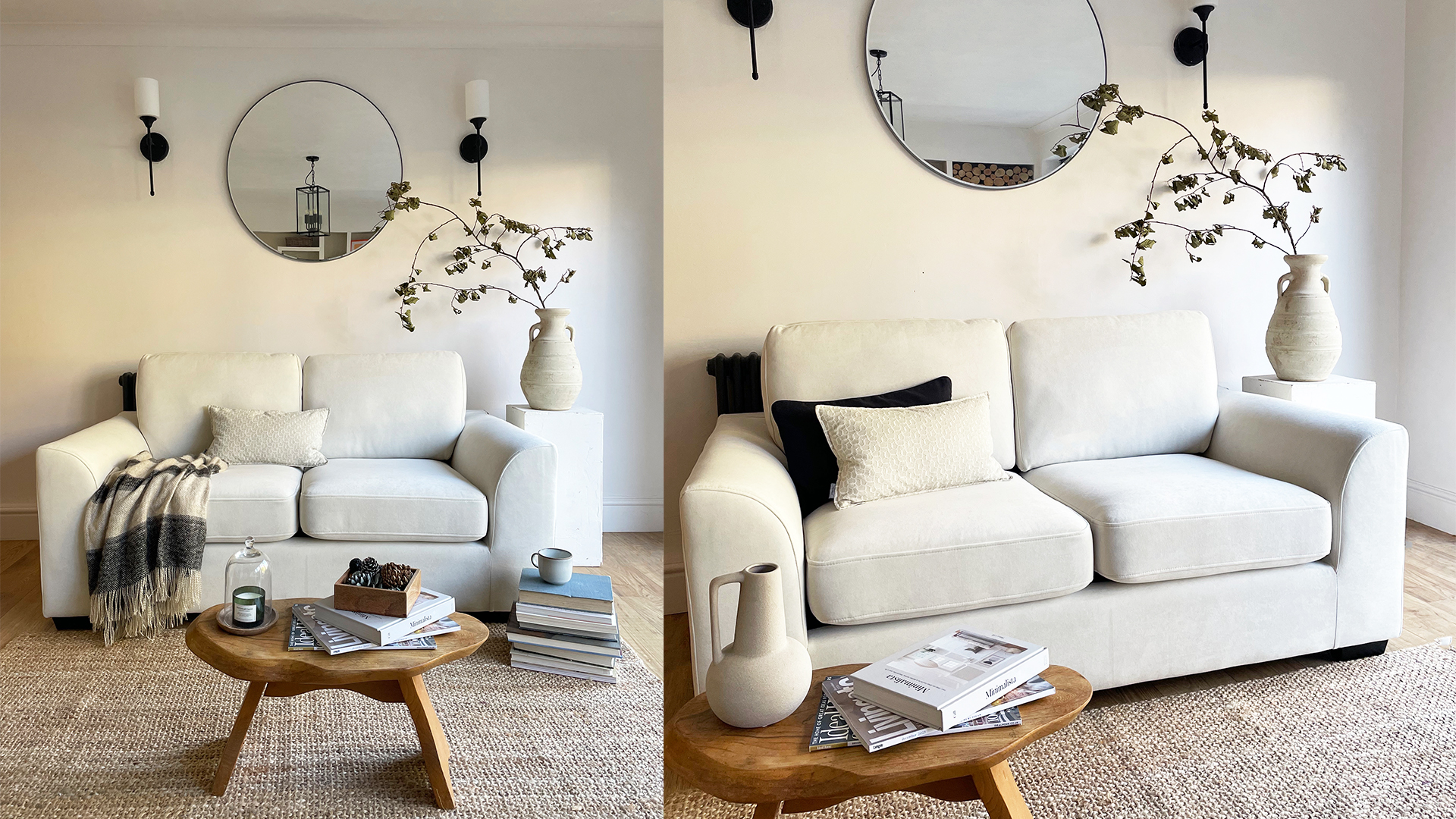
Tonal decorating involves using different shades of the same colour in your space. This is an easy way to decorate a room with brown because you can bring different shades in from paint, wallpaper trends, soft furnishings and accessories blending them for a harmonious feel. If you prefer a soft neutral scheme, try the Pantone Colour of the year 2025 Mocha Mousse as a soft brown starting point.
“The contemporary way of using the colour is all about layering different tones. When design is approached with tonal layering in mind, it’s easy to see how using brown in schemes can range from a light, brown-toned scheme (think tan variations in a Scandi scheme) to a darker-toned scheme (think Mid-century vibe), advises Karen Robinson, Interior Designer and owner at Ruby Red Interiors.
If dark browns feel scary, you could construct an earthy neutral palette by decorating with magnolia, beige or taupe with a generous dose of creamy caramels and biscuit tones.
Interior Designer and founder of Kensal Interiors, Deborah Cicurel, says, “After years of all things black, brown is finally making a comeback. And hurrah for that because brown in a home represents so many things: warmth, earthiness, nature, safety and calm, to name but a few vital qualities."
"As we move from starker shades such as grey and black, it’s time to embrace brown in its many forms, across the tonal spectrum, from taupe and mushroom to the deepest chocolate shades."
4. Add subtle brown accents
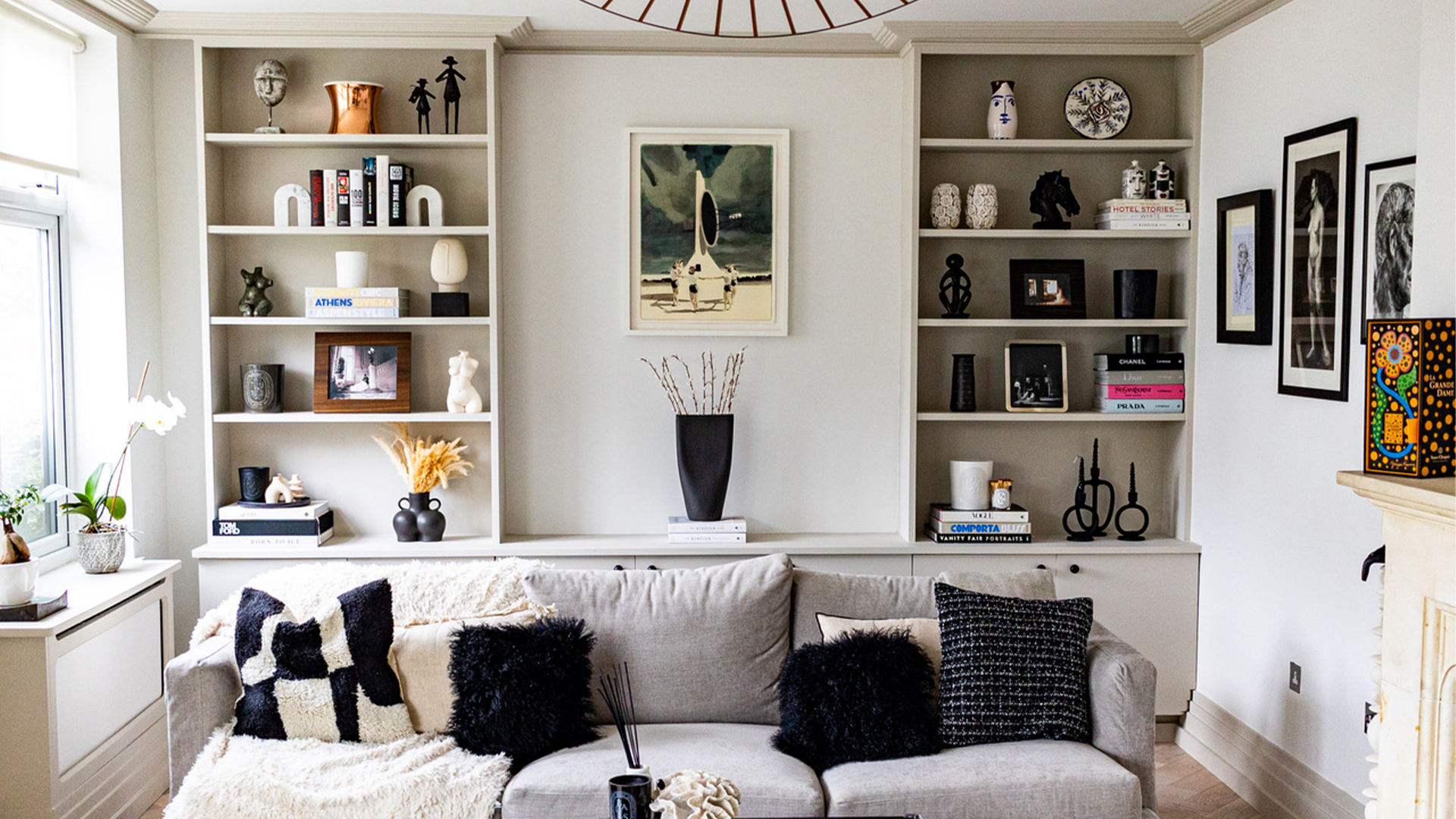
If you’re not ready to colour drench your entire space in opulent chocolate brown or caramel, and you don’t want layers of tonal brown colour, introducing brown accents will give a nod to the colour trend without it feeling overwhelming – for a subtle 'Quiet Luxury' decor.
“If you’re feeling a little tentative about diving into the brown trend, the good news is that brown is a super easy colour to start experimenting with," says Deborah. "You probably already have some brown accents in your home that you hadn’t even thought of, such as vintage wooden trays, brown-patterned cushions, sheepskin throws, jute rugs, woven baskets, rattan chairs, or chestnut-coloured lampshades."
Play with moving objects around where they haven’t been before to start introducing the trend into your space slowly,” she suggests.
Whether you opt for dark wooden candlestick holders for a mantle or light brown accessories to style a coffee table or shelf, there are so many ways to add brown accents to a room.
If you are a fan of the Bookshelf Wealth trend, you might already have shelves adorned with meaningful ornaments so consider moving them around for a fresh feel.
Interior Designer Charley Morgan has this tip for using brown accents to decorate a room, “We incorporate brown tones through the woods and metals we select in our projects to bring warmth to the space. As we find in nature, we use these as our grounding base, then layer colours and neutrals on top to create flexible spaces that can adapt through design trends”.
5. Embrace brown with flooring
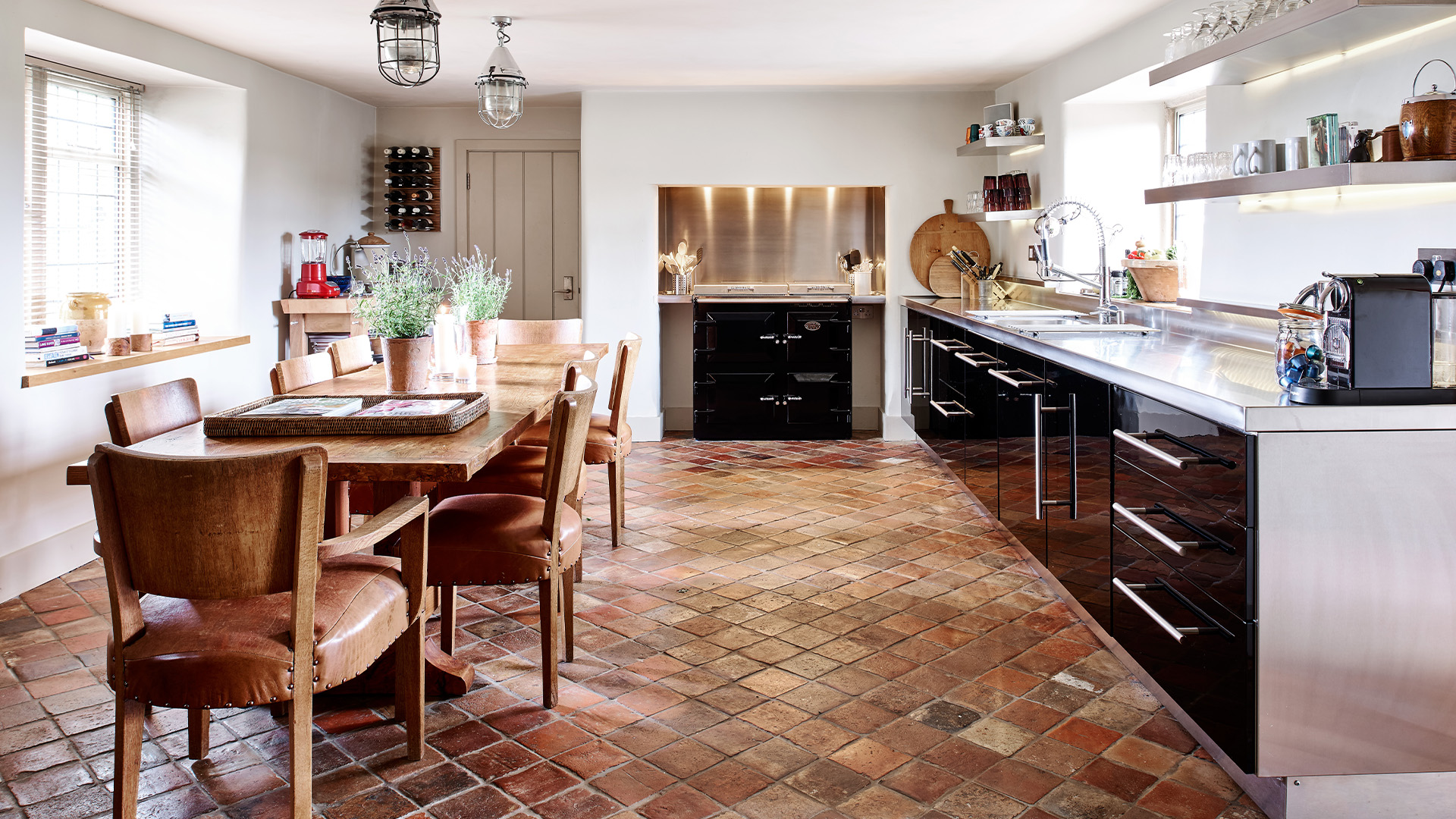
Flooring is one of the easiest ways to decorate a room with brown because it’s a practical colour and many of the usual flooring materials like wood and tiles are naturally brown.
Brown flooring doesn’t have to cost the earth (no pun intended) as there are such good laminates and vinyl flooring ranges available these days that you can adopt the look of handmade antique tiles at a fraction of the price.
Natural stone flooring, like the 100-year-old reclaimed French terracotta tiles at Ca'Pietra in the image shown, adds colour and depth boasting numerous shades of brown.
If you are looking for quick, less permanent ways to introduce brown into your flooring choices, why not select a rug or runner? Seagrass and sisal rugs bring colour and texture to the party and are hardwearing for busy family homes. A new rug in an on-trend seasonal shade is an easy way to update your home for spring.
6. Incorporate wood into your interiors
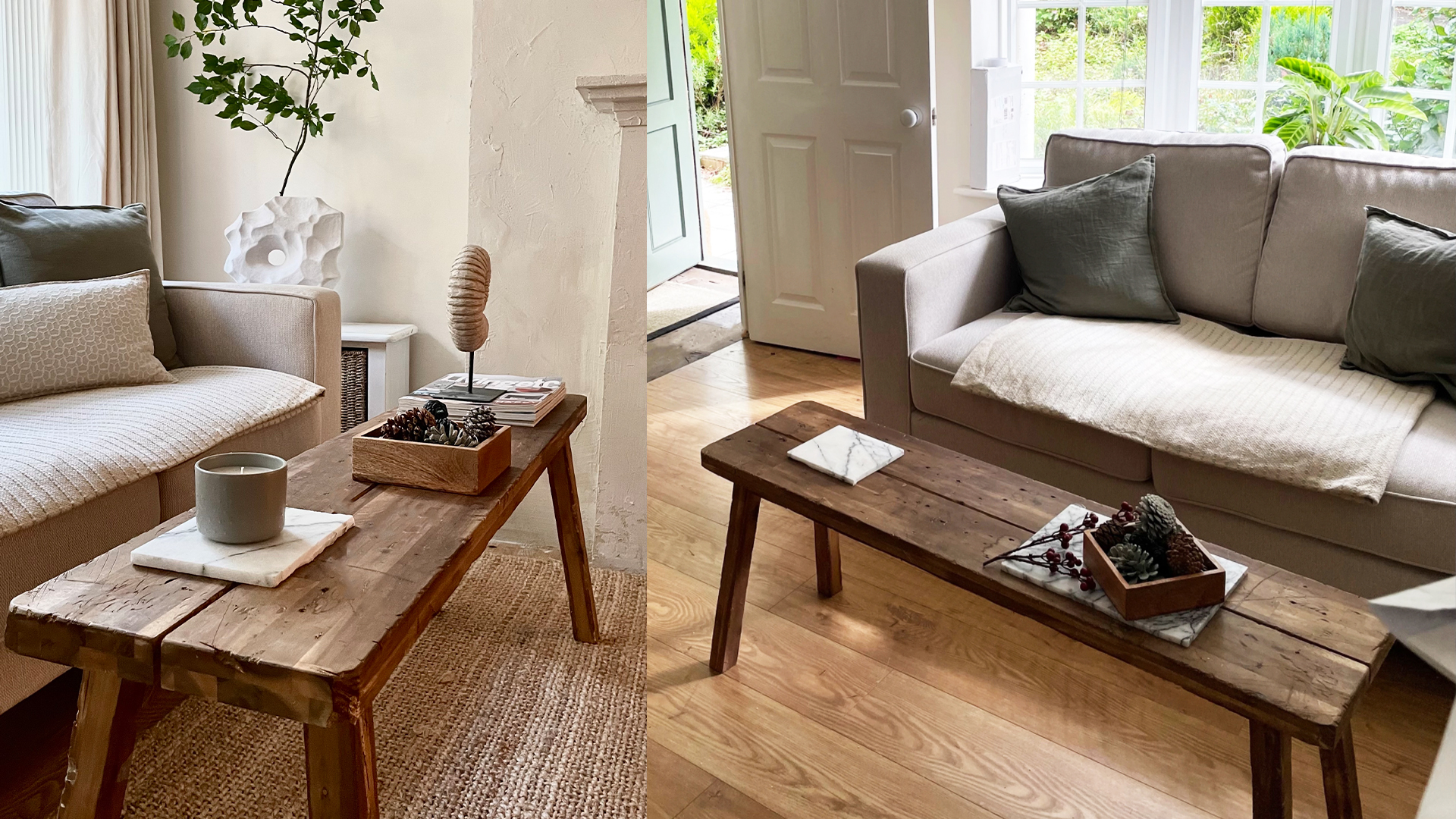
Using wood in your interior schemes is a good way to introduce numerous shades of brown without it feeling overpowering, and there are woods to suit every interior style.
Karen Robinson suggests, “In a Scandi scheme, you’d be considering light-coloured woods such as ash and oak, using them in light fittings, floor lamps and coffee tables, for example. Darker tan / brown colours could be used for the sofa and soft furnishings. A Mid-century scheme would be dominated by darker wood tones, such as mango wood, in the form of sideboards or side tables”.
I like to pick up furniture from charity shops and online marketplaces and change the tone and shade of the wood to suit the room I'm decorating. The DIY distressed wooden bench in the image was a bargain IKEA flatpack that I distressed using tools and stain. It was an easy project to complete in a day, resulting in a bespoke-looking antique-style bench for a bargain price.
Freestanding furniture offers flexibility, meaning you can rearrange room layouts whenever you fancy a change, whereas built-in furniture provides structure and adds character to a room.
Creating the built-in look with an IKEA BILLY bookcase hack is a great way to make a room look expensive on a budget.
7. Layer up the textures
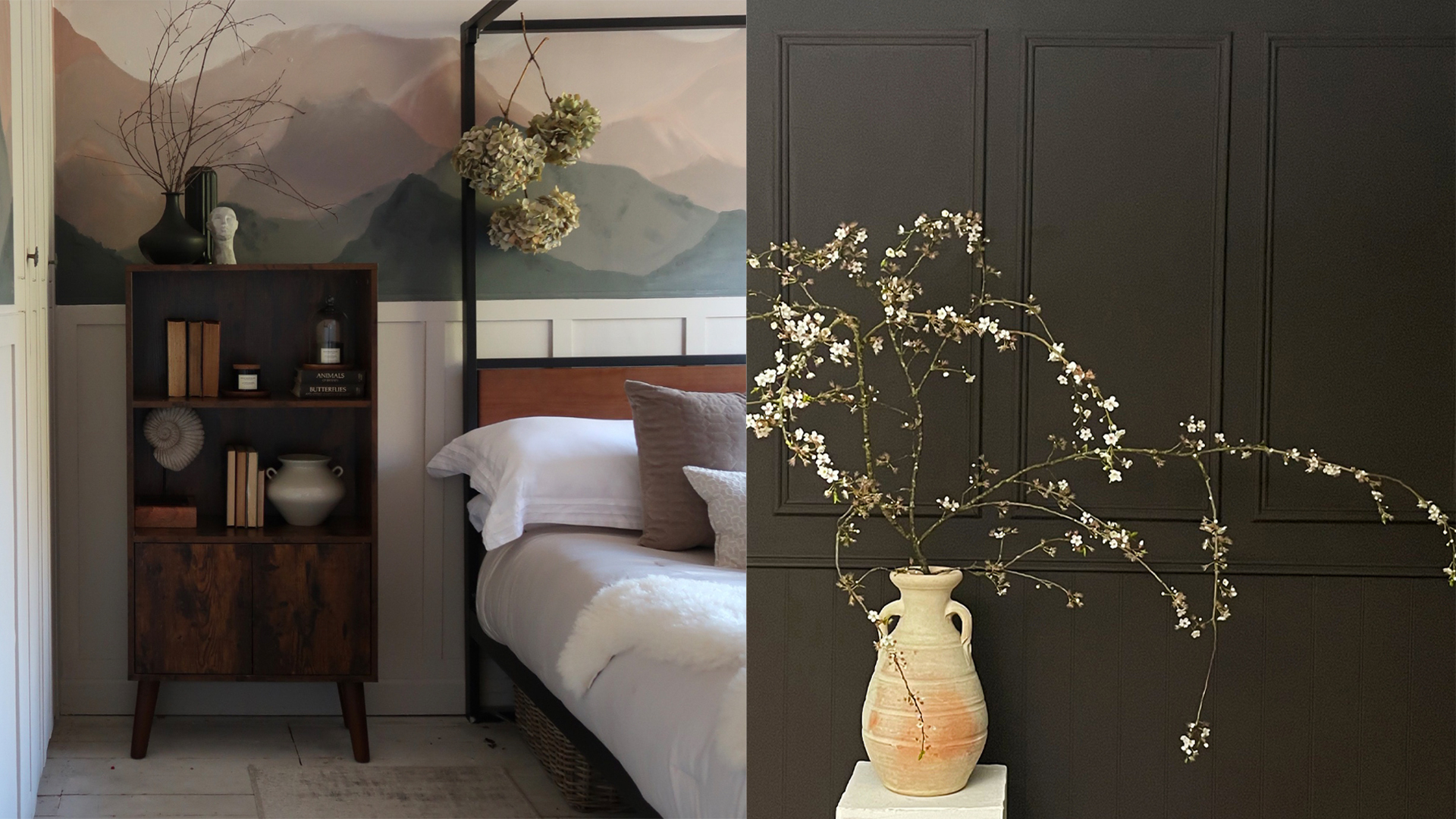
Adding many textures to a space decorated with brown adds interest and prevents expanses of colour from feeling flat – a current key bathroom trend.
To elevate your space, style a sofa or bed with earthy or jewel-tone cushions and opt for varied textures like velvet, linen and boucle. Adding wall panelling to a brown wall adds texture and depth as the light falls across the panelling creating shadows.
I installed picture frame moulding wall panelling on my chocolate-coloured living room wall and love the drama created by the light and shadow. Wall panelling is a great way to make a home look more expensive and also provides styling opportunities for wall art and lighting to elevate the room further.
“Because brown is such an earthy colour, decorating brown-inspired spaces with natural textures such as indoor plants goes down a treat," says Deborah Cicurel. "Brown is also a dream to pair with other colours, as it’s so versatile: depending on your scheme, you could decorate with pinks, burgundies, blues, greens and whites.
Brown may be neutral, but it’s so warm, textured and rich that using it is sure to transform your home into a cosy, welcoming and chic cocoon,"
“With their earthy tones, rich, chocolate browns are a subtle nod to nature and work wonderfully with natural materials such as stone, wood, wicker and rattan finishes,” advises Ruth.
Continuing with this advice, she says: “Deep rich browns work wonderfully as an alternative where you might previously have considered black, charcoal or a dark blue, bringing a restful and warm atmosphere to an interior. Beautifully complemented with textural elements such as wood and clay finishes, muted linens and tactile surfaces.”
FAQ
What colours look best with brown?
“A brown interior colour scheme is surprisingly versatile and not at all as dramatic as it sounds, as there are so many tones that you can ease into,” says Cathy Dean, Founder and CEO of Studio Dean. “Opting for a neutral brown base allows you to have versatility in your home as you can easily bring in other colours and trends.
“Add in a green for an earthy, nature inspired feeling, opt for a pink for a soft feminine space or a navy if you want something a little more bold. These tiny switch-outs alongside a base in a solid neutral mean you are not getting tired of your room and deciding to redecorate far more often than you need to”
For me, I love the combination of deep chocolate brown and pale pink paint colours or earthy browns with a gorgeous deep green. You can lift a dark brown by adding some metallics and consider the latest lighting trends to choose the best colour temperature for your lightbulbs to accentuate your chosen shade.
A warmer yellow bulb will create a very different feeling to a cooler white bulb, the right choice will depend on how you use the room and if you are looking to wind down or mimic natural light to focus and concentrate on tasks.
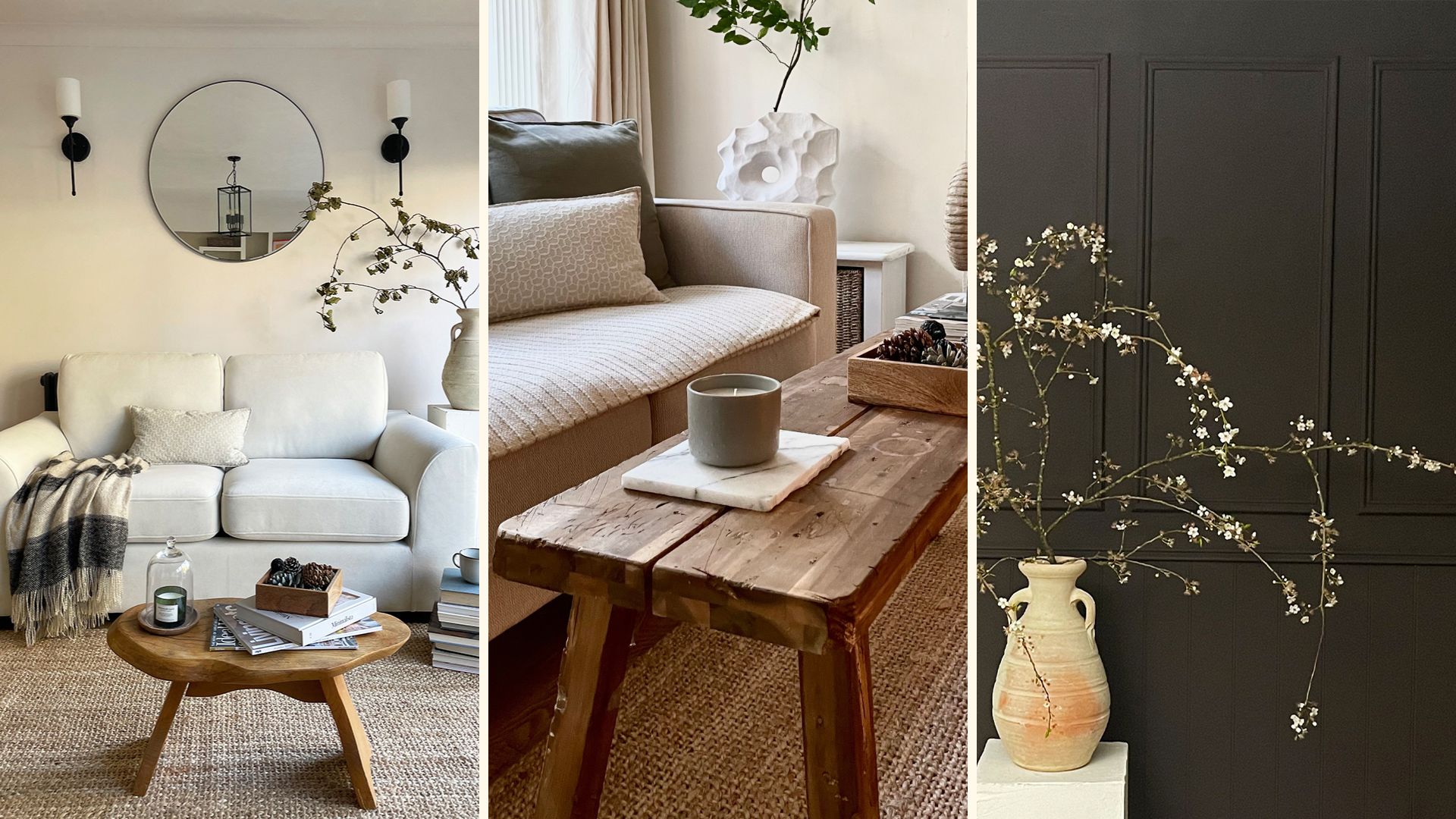
The colours you pair with brown can make or break the look, and Karen Robinson believes that the history of brown colour combinations is to blame for its bad rep.
“Brown has been a much-maligned colour for many decades and I lay the blame firmly at the door of the 1970s. During this decade, we saw solid blocks of mid-toned brown alongside copious amounts of orange, usually in the form of ‘psychedelic’ patterns.” Luckily it doesn’t have to be this way anymore if you're not a fan of 70s-inspired decor.
“Today, we can use brown in our interiors in a thoroughly more thoughtful way,” she advises. “Colours that work marvellously with brown are blush pink, pale olive green and metallics such as aged gold and bronze. Metallic tones work especially well against a brown paint such as Dulux’s ‘Toffee Fingers’. Or you can go full-on old school and introduce the classic orange.”
Interior Designer Charley Morgan agrees that brown is a versatile colour to work with, making it easy to add retrospectively to a room if you don’t want to start from scratch, “ We find there’s a shade of brown to go with every colour, from a warm brass paired with earthy greens to a deep rich mahogany and taupe scheme. And don’t be afraid to mix and match brown shades and textures to add depth and interest to your space,” she suggests.
How do you make brown look good?
The key to making brown look good is to work with the room you are decorating, if you have a small snug with reduced natural light where you want to hunker down and relax then consider colour-drenching it with a dark and comforting shade of deep brown.
Add layered lighting to create the right ambience and style with cosy and tactile soft furnishings for the ultimate relaxing experience. Add your favourite room fragrance and a soft rug to sink your feet into at the end of a long day.
However, if you are working with a light, bright multi-functional room where you don’t want to embark on a marathon paint job, consider layering tonal browns using wooden furniture, and brown accents from ornaments, accessories and soft furnishings.
Consider adding touches of subtle brown by painting the woodwork, for example, the skirting boards, coving and door architraving. This works well with more pared-back and neutral walls and offers many benefits of brown without the full impact.
Deborah has this advice, “There’s no need to be matchy-matchy with browns. Layering different browns on top of each other creates an earthy, grounded and relaxed aesthetic. You could introduce brown subtly to a room, for example, by hanging a few rustic wooden shelves, framing pictures in mahogany frames, adding espresso-hued side tables by a bed or sofa, or by introducing a brown headboard, whether wooden or fabric.”
All colours have both positive and negative traits, so for a successful interior scheme, unsurprisingly, you need to lean into the positives and mitigate or avoid the negatives.
Sounds simple, right?! And it kind of is, the only caveat being that people respond differently to colours, as colour psychology is such a personal thing, making it difficult to compile a prescriptive set of rules. Work to a level of decorating with brown that suits you.







